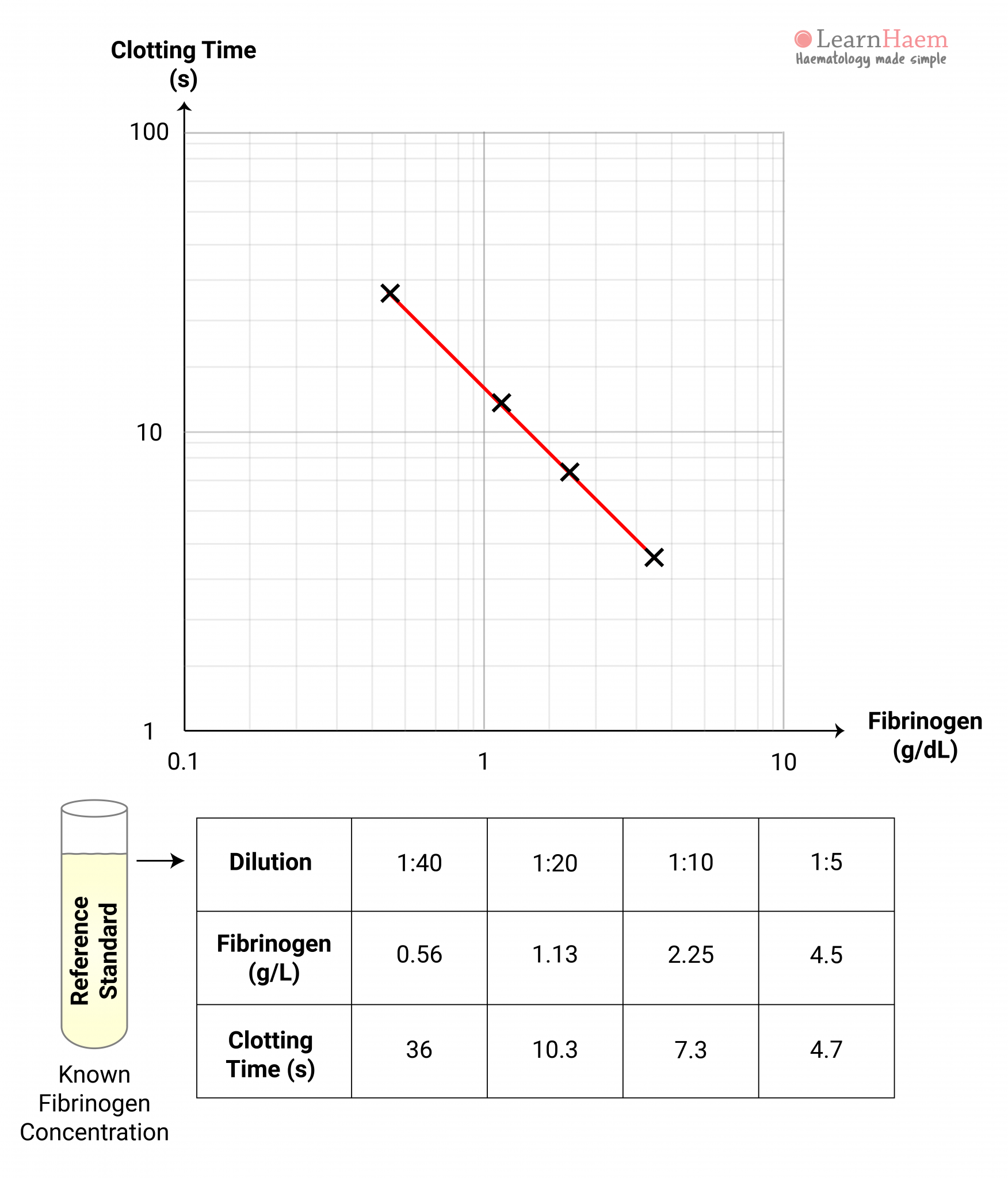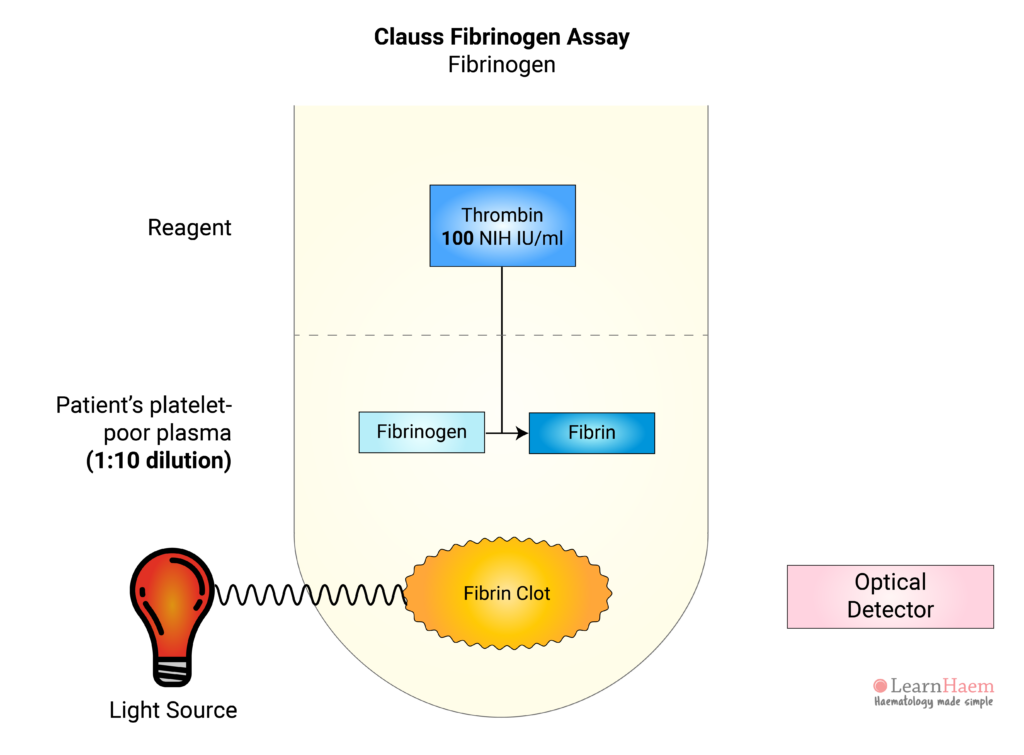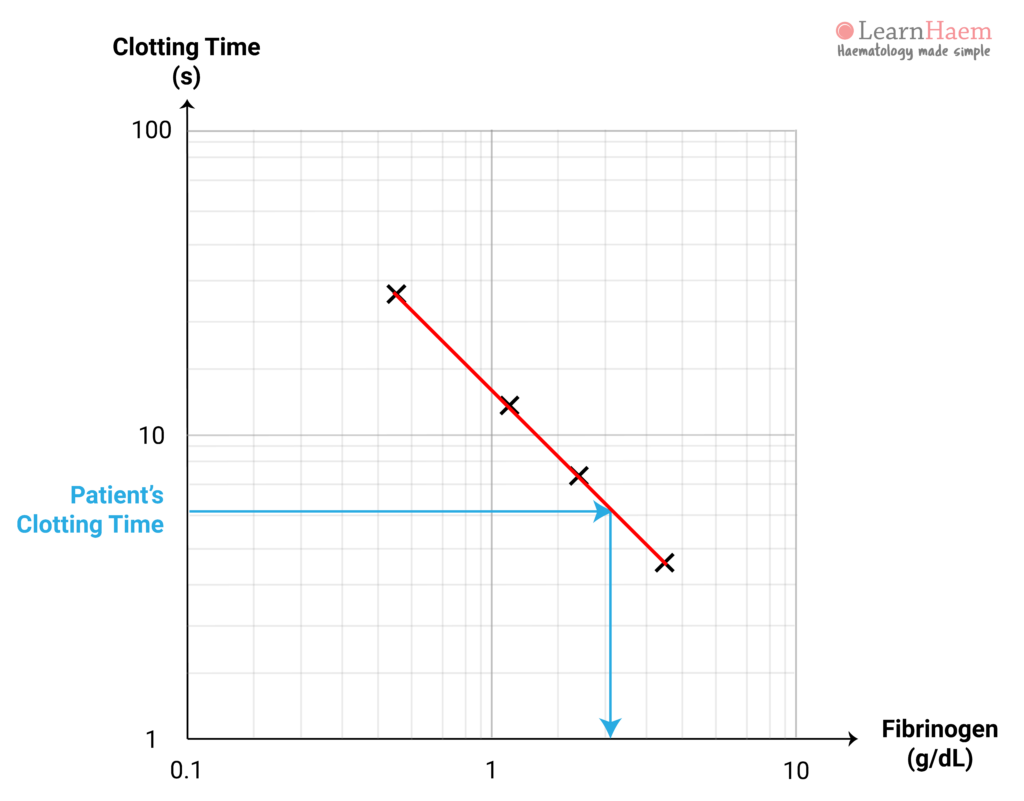Thrombin is added in excess to a 1:10 dilution of patient platelet-poor plasma. The time taken for a clot to form is recorded and read off a calibration curve to derive the fibrinogen concentration (see below).
Because reagent thrombin is added in excess, the assay is insensitive to fibrin degradation products, heparin and other thrombin inhibitors unless they are present in very high concentrations.
The Clauss fibrinogen assay is sensitive to hypofibrinogeaemia and dysfibrinogenaemia.
The Calibration (Standard) Curve
The Clauss fibrinogen assay requires that a reference plasma with a known fibrinogen concentration be diluted to create a calibration curve. The clotting time is plotted against a fibrinogen concentration on a log-log scale.
It is important to ensure that the standard curve is linear. The 1:10 dilution is typically considered to be 100% (i.e., normal).
Deriving the Patient's Fibrinogen Concentration
To derive the patient’s fibrinogen concentration, draw a horizontal line from the y-axis to the reference line, then draw a vertical line from the reference line to the x-axis. The value on the x-axis represents the patient’s fibrinogen concentration.
For clotting times outside the linear range (i.e., very low or very high fibrinogen concentrations), differing dilutions of patient plasma will have to be used. However, in order to derive the correct fibrinogen value, a mathematical correction must be applied. For example, if a 1:5 dilution is used, then the answer must be divided by 2, whereas if a 1:20 dilution is used, the answer must be multiplied by 2.




Leave A Comment